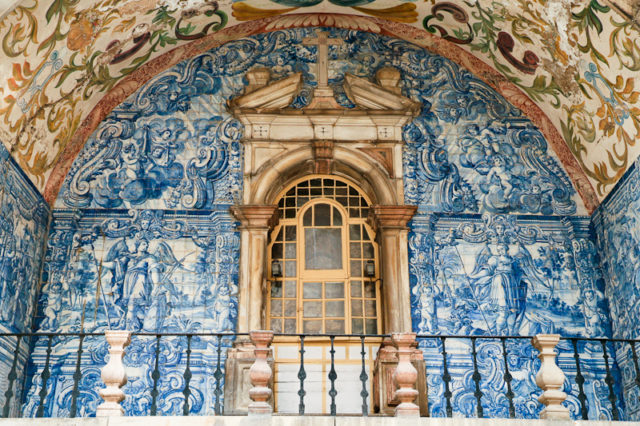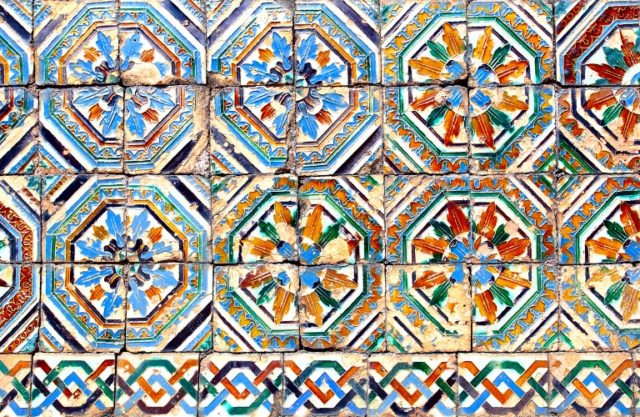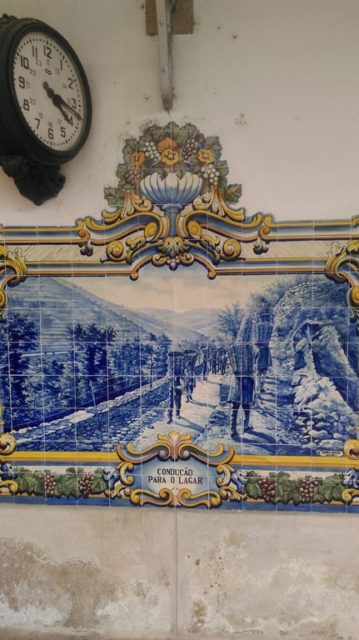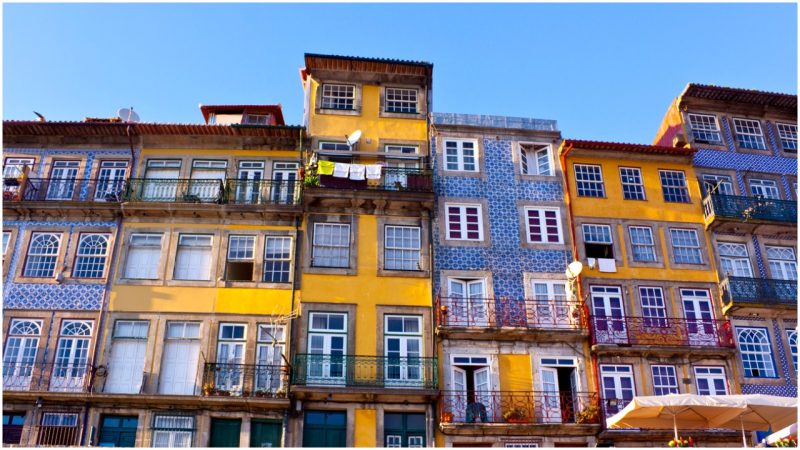When in Portugal, look around and you’ll see them everywhere, on practically every building–beautiful ceramic tiles with delicately painted décor, most common in different shades of blue or, sometimes, in a balanced fusion of colors that makes visitors feel like they’ve stepped into a picturesque postcard or storybook. If your friends tell you they’ve brought you a little gift from Portugal, it’s almost certain that you’ll get a ceramic Portuguese tile or something with motifs drawn from it. These tiles are called “azuljeos,” and in Portugal you’ll hear this word frequently.
Famous azuljeo replicas and, in some places, the traditionally tin-glazed tiles are sold in every souvenir shop and at the local flea markets. Rooted in Portuguese history and culture, azulejos are the main exterior decoration of everything in Portugal from walls of monasteries and churches to murals ordinary houses, railway and metro stations, park seats, shops, fountains, and palaces.
Azulejos were brought to Portugal in the 13 century when certain parts of the Iberian Peninsula were under the rule of the Moors. The designs of the Moorish tiles were lace-like and looping, with floral motifs and curvilinear designs. Despite their long presence in the region and their influence, no tile work from the Moorish occupation has survived. The azulejo dominance and adornment of buildings in Portugal began sometime later, in the 15 century, after the Christian reconquest.

When Portugal’s King Manuel I visited Seville and the Alhambra in Granada, Spain, he was astonished by the aesthetics of the Spanish tiles, so he brought the idea back and implemented this artwork in his kingdom’s culture. He wanted to decorate his Arab room in his palace in Sintra with the same type of tiles he saw in Spain so he imported them from Seville. These tiles were strictly geometric-patterned, portraying no human figures which would have been contrary to Islamic law.

As time went by, Portuguese painters dared to step out of the ornamentally decorated framework and introduced human and animal figures in their designs. After the Gothic period, the tiles were used to cover up and fill massive blank walls in large buildings. These empty spaces launched the “fresco” art form in Italy as well as the art of azulejo in Portugal. Blues and whites were dominant in the antique decoration of azulejos.
If you like azuljeos then you will like this clip – 3,500 year old prehistoric friezes unearthed near Lima
Presumably, these two colors reflect the influence of the Age of Discoveries (the 15th to 18th centuries) and the influence of the Ming Dynasty of white porcelain from China, but there were other dominant colors such as yellow, green, and some golden shades. The blue color on the tiles often suggests wrong allusions to many who suppose that the name “azulejo” is a derivation of “azul” (Portuguese for blue). In fact, the word comes from the Arabic “az-zulayj” which roughly translates as “small polished stone.”
The popularity of azulejos rapidly grew and by the 15th century, they were used in to cover walls and floors. The Portuguese adopted the skill and technique from Ceuta (a conquered territory in North Africa), but until the mid 16 century they mainly relied on foreign imports.

Tiles creating murals or tapestries which decorate buildings can be found in other countries as well such as Brazil, Africa and India but the azulejos authenticity lies in the practicality of its use as an integrated part of numerous buildings.
Historical records have shown that Portuguese storytelling has always relied on decorative means and artwork, so it’s logical why most of the azulejo-murals depict the poignant historical background of the country and its cultural aspects. However, these tiles have had a practical use as well, protecting the buildings from heat, dump and noise and, additionally, serving as nameplates, house numbers or street signs.
The 17 and the 18 century are considered to be the golden era of Portuguese tile production. Both Portugal and her colonies increased the demand for azulejos, so mass production began. The patterns were repetitive and mainly in baroque style, and could be found adorning all kinds of buildings, from monasteries and grand churches to houses. One-off commissions for complex designs were still also in demand, and the painters of these tiles were recognized as artists and signed their work. One of the most active of these artists at the time, Gabriel del Braco, created an exuberant style of painting with the pictorial use of engravings, inspired by imports from Holland. The infamous earthquake of 1755 which destroyed most of Lisbon brought architectural changes as well, shifting the style from Manueline-Gothic to Pombaline style. This was reflected in the fashionable designs for azulejos, which became more lively in tones and patterns.

Regardless of its strong cultural influence, azulejo art faced a decline in the 20th century as the cultural elite considered it a design for poor people. Nevertheless, the technique famously made a comeback in the 1950s, in Lisbon’s first metro station.
The first seven metro stations are covered in geometric patterned tiles designed by Maria Keil, who led the revival of the art. Nineteen of Lisbon’s stations proudly wear her design today. So, hop in the metro and enjoy the view of each stop if you ever find yourself in Lisbon! Other popular azulejo hotspots around Portugal are the Sao Bento Railway Station in Porto, The Bucaco Palace, and the impressive convent complex Madre De Deus in Lisbon, which is the centerpiece of Museu Nacional de Azulejo–a museum dedicated to tile art from Portugal and rest of the world.
